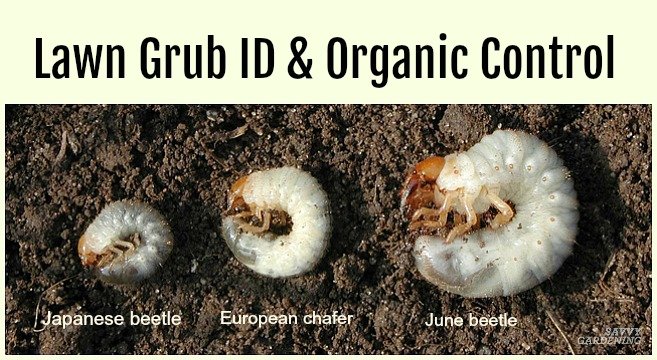
If you’re a homeowner, understanding how to control these pests can save you from potential disaster. Fortunately, with a solid seasonal grub worm control schedule, you can keep your lawn looking vibrant and healthy all year. Let’s dive into how to manage these pests effectively, what tools you’ll need, and when to take action to protect your beloved yard.
What Are Grub Worms and Why Are They Bad?
Grub worms are the larvae of various beetles, including Japanese beetles and June bugs. These little critters thrive underground and can breed in large numbers, leading to some serious problems for your lawn. You might be wondering, “How much damage can they really do?” Well, when grubs feast on the roots of your grass, they can cause brown patches and even kill entire sections of your lawn.
It’s not just your grass they’re after; they also attract predators like birds and raccoons. These animals, in search of a tasty snack, can dig up your lawn, leading to even more damage. So, if you spot increased wildlife activity in your yard, it could be a sign that grubs are lurking beneath the surface!
When Should You Start Grub Control?
Timing is everything when it comes to grub worm control. Generally, the best time to start your control measures is in the late spring or early summer. This is when adult beetles are laying eggs, which will hatch into grubs shortly after. If you can interrupt this cycle, you’ll have a much easier time keeping your lawn healthy.
But here’s the thing: if you wait too long, you’ll have a lot more grubs to deal with come late summer or early fall. That’s when they’re in their peak feeding phase, and your lawn can suffer the consequences. So, putting a plan in place as early as May can help you stay ahead of the game.
Choosing the Right Grub Control Method
Now that you know when to start, let’s talk about how to control those pesky grubs. There are several methods to consider, and each has its benefits.
- Chemical Treatments: Products containing *imidacloprid* or *chlorantraniliprole* are effective at killing grubs. Make sure to follow the instructions carefully for the best results.
- Natural Solutions: If you prefer a more eco-friendly approach, try using nematodes—tiny worms that feed on grubs. They’re harmless to plants and pets!
- Preventative Measures: Applying a preventative treatment in early spring can stop grubs before they start. Look for products designed for this purpose.
Ultimately, the best method for you depends on your preferences and your lawn’s specific needs.
Creating Your Grub Control Schedule
Here’s a simple seasonal breakdown to help you create your grub control schedule:
Spring (April – May)
– **Keep an Eye Out:** Start monitoring for adult beetles in late April.
– **Preventative Treatment:** Apply your chosen preventative treatment around late May.
Summer (June – August)
– **Check for Grubs:** If you missed the spring treatment, now’s the time to check for grubs. Pull back some grass in problem areas and look for the larvae.
– **Treatment:** If you notice grubs, apply your chemical or natural treatment.
Fall (September – October)
– **Final Check:** Inspect your lawn one last time for signs of grubs. If you find any, a quick treatment can help limit further damage.
– **Lawn Care:** Overseed and fertilize your grass to promote recovery from any damage.
By following this schedule, you can minimize grub damage and keep your lawn thriving.
Maintaining a Healthy Lawn to Prevent Grubs
A healthy lawn is much less likely to suffer from grubs or any pest infestation. Here’s how to keep your grass strong and vibrant:
- Regular Mowing: Keep your grass at the recommended height for your specific type. This helps shade the soil and reduces the chances of grubs hatching.
- Proper Watering: Water deeply but infrequently. This encourages the grass roots to grow deeper, making them less vulnerable to surface-feeding grubs.
- Fertilizing: Use a balanced fertilizer to promote a strong root system. Healthy grass can better withstand grub infestations.
You might be asking, “How does my lawn’s health connect to grubs?” Well, a robust lawn can bounce back quickly from minor infestations, meaning you won’t need to resort to heavy treatments as often.
Monitoring and Adjusting Your Strategy
As with any pest control plan, it’s important to keep an eye on how effective your strategy is. After you’ve applied treatments, monitor your lawn regularly. Look for any new signs of damage, and if you notice an increase in grub activity, it might be time to adjust your approach.
Here’s a tip: consider keeping a log of when you apply treatments, what products you use, and the results you see. This will help you refine your approach year after year.
Managing grubs doesn’t have to become a nightmare for homeowners. By starting with the right knowledge and a solid seasonal schedule, you can effectively control these pests and keep your lawn looking its best. Remember, the key is to stay proactive. With a little bit of care and attention, you can outsmart these soil-dwelling nuisances and ensure your lawn remains lush and green all year round. So grab your tools, and let’s get to work on that beautiful yard!
